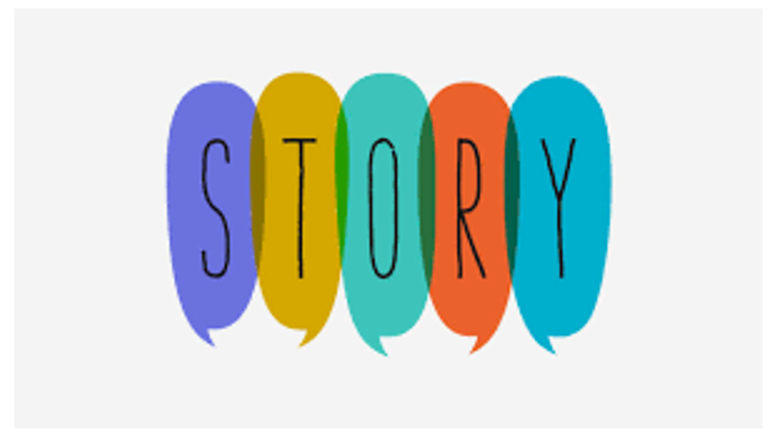AI may be transforming the Public Relations landscape but what sets companies apart is understanding that data without story are just numbers. And reputation without story is unlikely to resonate. And probably won’t stick.
‘Story’ is what stakeholders respond to and what they remember most. Think about it: who doesn’t love the backstory of an underdog company or the self-made, rags-to-riches CEO. Not just the beginning and the end, but also the struggle, trials and failures along the way. Or when a leader reveals real feeling to employees or during a crisis. People still talk about when former US president Barak Obama sang ‘Amazing Grace’ at a church service after a tragedy.
Without question, analytics will help with many aspects of targeting and reaching stakeholders. But a well-developed corporate story remains, “the guiding light that creates strategic clarity, broad alignment and a sense of shared purpose, helping organisations move further, faster, together with employees and stakeholders,” explained Brent McCallum, Managing Director of Make Believe, a consultancy I’ve partnered with to help pharma brands “tell and sell” their stories.
Why is story so powerful? Why is it so crucial to a corporate brand? How does a strong corporate story help sustain companies through good times and the more difficult? As always, I look to the science and experienced colleagues for the answers and provide examples from our own client experience. Here they are:
Brain chemistry
Chemicals are activated in the brain when stakeholders are ‘on story,’ a phrase I heard from Brent. Cortisol is typically released at the beginning of a story when a new idea is introduced, and tension begins to rise. Cortisol wakes people up, heightens attention. Oxytocin is released next as the story introduces characters, proof points, and nuances. This chemical promotes trust, empathy and relatability. When the story comes full circle, the brain is rewarded with a hit of dopamine. It feels good.
Stories make reputation personal
A good corporate or brand story immerses stakeholders in a company and its mission (e.g. early disease detection, cleaner air, better financial planning, brushing teeth at night). Helps a message get past ‘eyeball’ awareness (glancing, scrolling, watching a short video) and into the brain. Makes people think. Inspires action. Stories help people feel connected rather than like bystanders.
To be sure, finding and developing stories is harder than announcing news, sponsorships, or, in the healthcare world, published data and regulatory milestones. It’s a different exercise entirely. Developing ‘story’ needs understanding and sensitivity and emotion. It needs words and images that do more than educate—an effective story also inspires and motivates. A positive reputation helps stakeholders ‘feel’ something about the company rather than just ‘know’ something.
Story fundamentals
Stories that ‘take’ have several elements in common including:
- They are honest. No leaps of faith are required. No suspension of belief. They can surprise. They can delight but ultimately, stories need to be grounded. This can include data and evidence, but most impactful is real experiences had by real people.
- Good stories are responsible – they don’t need exaggeration or embellishment. They can never be ‘spin.’ Stakeholders see right through that.
- Think ‘showing’ not ‘telling.’ Stories need to be brought to life. Videos and images may make a significant difference, to be sure. But a good story transcends the platform.
- Stories don’t just impart information, they offer ‘wisdom.’
How it works: an example
For a long-standing client in the diabetes area, the seed of the story we need to tell comes from the global objective. Our role is to bring it to life in ways that resonate with internal and external stakeholders and that the media will cover. We typically have no hard news. So, we listen a lot, read all the time and look for opportunities from the news and trends as well as within the company (the team, speeches, images and information) to find the hooks that carry through the story seed, impart practical wisdom and spark action. See one successful execution here.
This focus on the link between diabetes and mental health became the centerpiece of a larger reputation campaign we called ‘Diabetes State of Mind’ that included an array of tactics including a company event, a national survey, earned and social media. The impact on reputation? Internal and external stakeholders proactively engaged. They came forward with their own experiences and stories, participated (liked, shared on social media, attended events, visited website) and company leaders heard directly from peers, colleagues, friends and family after publication of the earned media.
The reputation-reality gap
Crucially, a well-developed story bridges the gap often seen in corporate reputation work between the telling (e.g. aspirational statements about dedication and commitment) and the showing. This is what Brent and his colleague at Make Believe, Adam Guthrie-James, call the reputation-reality gap. Stories enable and empower shared experiences, reveal the struggle, demonstrate company internalisation and effort against an issue. Story brings stakeholders into the effort the company is making to address or even fix and opens the door for two-way communication and problem-solving.
I want to close with a metaphor I heard from Brent: A corporate story is like the trunk of a sturdy tree – providing strength, stability and keeping your central idea going in a straight line. It draws on the roots (data and insights) and combines them with an emotional heart.
In short, once reputation has a real story at its core, it can then flex and branch out into the world in different ways. That’s the way it sustains and sticks.
The views and opinions published here belong to the author and do not necessarily reflect the views and opinions of the publisher.



Be the first to comment on "In Building Reputation and Relationships – The Story is an Art"